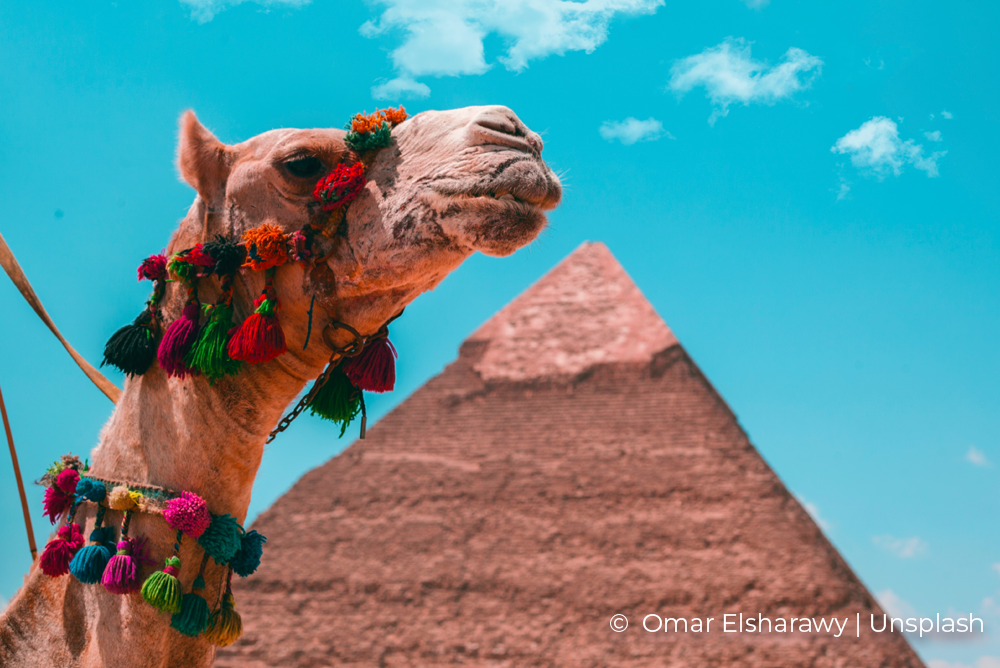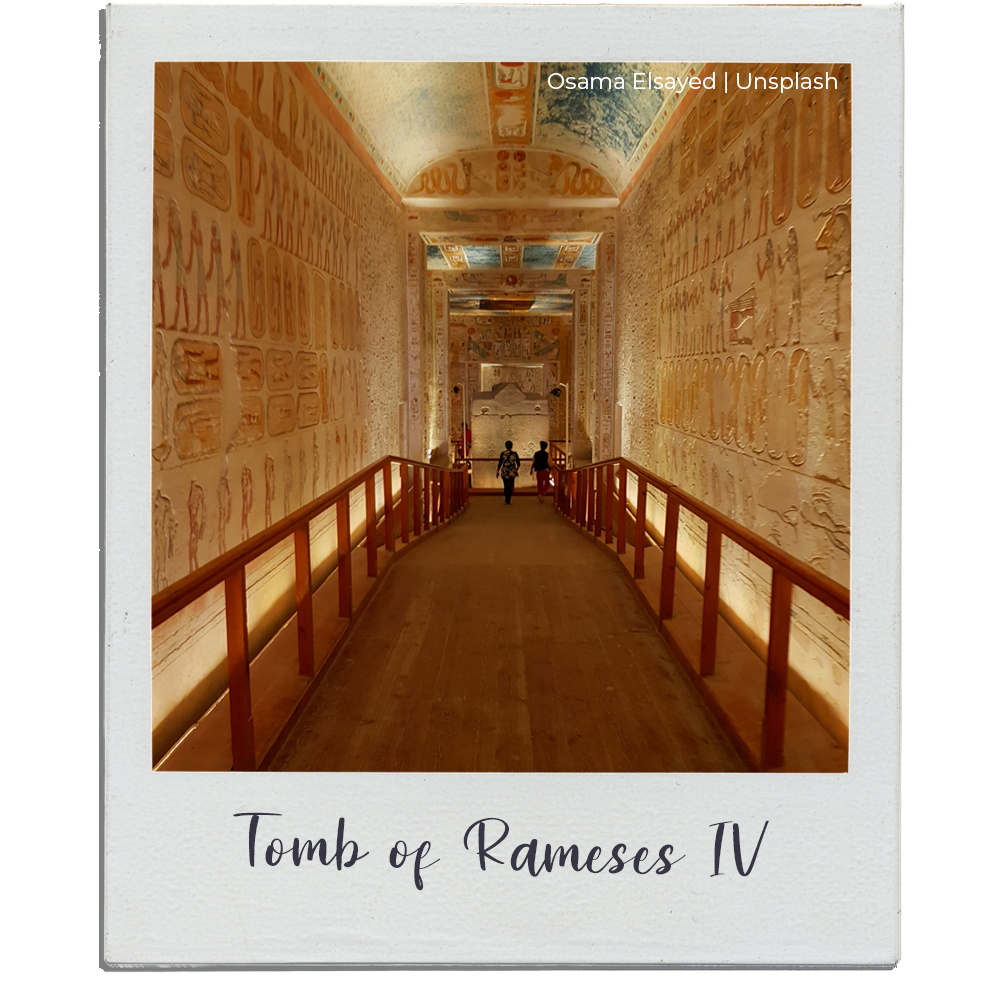JEWELS OF THE NILE
A cruise on the River Nile is a journey back in time, to the myth and magic of ancient Egypt and the glamorous age of travel captured by Agatha Christie, saya Laura Gelder
This is a feature from Issue 5 of Charitable Traveller. Click to read more from this issue.
Night falls fast on the Nile. By day the river is like an uncoiled snake resting in the desert and the high sun is inescapable, glancing off the white sails of the feluccas and gleaming cruise ships and throwing the ancient carvings of every temple into stark relief. As the sun dips, the desert turns rose-gold, the river becomes mercury, temples fill with shadows and statues appear almost alive.
I had so many expectations of what a Nile cruise would be like, but I didn’t expect my romantic Agatha Christie-influenced notions to be so on the money. Having checked into Abercrombie & Kent‘s sleek and spotless Sanctuary Sun Boat III, I join a group of fellow cruisers for a shopping trip to Aswan’s hectic souk in search of spices.
Salesmen tempt us at every turn with everything from cotton shirts to scarab beetle trinkets, as we weave our way past the stalls piled high with lamps, leather sandals, scarves, pottery, wooden souvenirs, and woven baskets.

We push on to the spice market and fall under the spell of one of the sellers there, who takes us energetically through his mounds of colourful wares, making us smell snapped cinnamon, rub rose buds between our palms and taste the local desert-baked peanuts. No one asks about the pile marked ‘viagra’, which looks a bit likedried porcini mushrooms. I leave with stuffed bags of cumin and saffron.
We must hurry to reach the Old Cataract Hotel in time for sunset. Agatha Christie’s famous novel Death on the Nile featured this grand hotel and she stayed there many-a time. it was built by Thomas Cook and its opulent interior is evocative of a time when travel was truly exotic. The décor is part Agatha Christie part One Thousand and One Nights, mixing wood-panelled lounges, leather armchairs, and antique telephones in alcoves with star cut Aladdin-style lamps, exquisite Arabic fretwork and heavy patterned carpets.
As our fez-wearing waiter sets down a tray of gin and tonics the call to prayer echoes from a distant muezzin and white-sailed feluccas slip silently through the water.

Under the mosque-like dome of the grand dining room, guests including Winston Churchill and Tsar Nicholas II have sat. It could hold hundreds but only a handful are sat under its enchanted ceiling tonight.
On the terrace I sink into a wicker armchair and watch a timeless scene unfold as the sun sets, framed by palm trees ruffling in the breeze. We’re looking over Elephantine Island where the small houses of a Nubian village twinkle across the water. Beyond are sand dunes, the undulating curves more pronounced by the gathering shade. As our fez-wearing waiter sets down a tray of gin and tonics, ice cubes chinking softly, the call to prayer echoes from a distant muezzin and below the white-sailed feluccas slip silently through the water. We stay until the desert fades to black.
All Aboard
Back on board, cold towels and even colder cocktails await, followed by a sumptuous dinner. The yacht only hosts 36 guests and its décor is between the 1920’s and 1930’s, sporting cream walls with dark wood pillars and teak and rattan furniture. I fall asleep quickly cossetted in my four-poster bed.
The next morning we catch a motorboat to the peaceful island of Agilkia and the temple of Isis, which was moved from the neighbouring island of Philae in the 1970’s to rescue it from floods caused by the nearby dam. The early morning heat is still searing but we have the complex to ourselves as we pass through towering gates bearing the carvings of the falcon-headed god Horus – son of Isis – and wander shaded cloisters topped with statues of the cow goddess Hathour. Isis was one of the last ancient Egyptian gods to still be worshipped and her cult spread as far as Britian and Afghanistan.
Re-joining the ship, we motor slowly north. The Nile is lined with a fertile strip of green, where farmers and their children are tending to buffalo, but beyond is desert. Like most Nile cruises, we drift leisurely from temple to tomb; east bank to west bank. The Egyptians believed the sun represented the cycle of life and so they built their temples where the sun rose and laid their dead to rest where it set.
I find my imagination captured by Kom Ombo, a temple dedicated to the crocodile god Sobek. We’re told it was discovered with its cellars stuffed with the mummified remains of this revered and feared reptile and go to see the swaddled beasts in its adjacent museum. Much of the temple has been destroyed by earthquakes or humans but carvings remain which are thought to be among the first depictions of medical and surgical instruments, like scalpelss, forceps, and medicine bottles – proving just how advanced the Egyptians were.

Our local guide is not just incredibly knowledgeable but, like like all Abercrombie & Kent’s guides here, a qualified Egyptologist. George (a Coptic Christian) patiently attempts to give us a snap shot of a civilisation which ruled for a mind-boggling 3,000 years and whose remnants still stand thousands of years later. “This, oh this isn’t that old,” he says with a dismissive wave at one point, “about 2,300 years”
On board, the chilled towels, beers, and bowls of peanuts keep coming if you want them to. The top deck has day beds swathed in white cotton and a cooling plunge pool. Lunch is served on the rear deck and is a huge buffer of barbequed meat and fish with crisp salads and side dishes like aubergine stew, followed by an unavoidable dessert selection.
I stay up to watch as we pass through a loch around midnight and then retire to bed, lying in the dark and watching the neon lights of unknown towns sweep by.

Fact or Fiction
As the trip goes on the gods and their triumphs and tragedies become as real as the kings and queens, and the line between reality and legend becomes blurred. The sky goddess Nut, always pictured hugging the earth in a yoga-style pose, seems as plausible as Queen Hatshepsut and her mortuary temple.
Lined with almost perfect statures in her image, from a distance it looks like a modern luxury hotel, its vastness dwarfed by the cliffs of Deir el-Bahari. Inside, paintings of fish, monkeys, big cats, and giraffes are still incredibly vivid after 3,500 years.
They are evidence that Hatshepsut traded with the exotic Land of Punt, whose exact location is still debated by historians, though theories include Eritrea and Ethiopia.
No photos, are allowed in the deep tombs under the Valley of the Kings. The corridors are also painted vividly with blue, ochre, green, and red telling stories of various reigns.
It’s Tutankhamun’s resting place which gives me the biggest shivers, not because of its beauty – it was never finished because he died so suddenly – but because of the story of its discovery. Howard Carter was days from the end of his fruitless search for the young pharaoh’s tomb, when a water boy – the son of a grave robber- ran to tell him he’d found a stone. The stone was a step and as more were excavated they led to the door of a tomb. The story goes that Carter peered through a hole he’d made in the door, his candle guttered from the air escaping the chamber and his companion asked: “Can you see anything?.” As Carter’s eyes became accustomed to the dark he saw the gleam of gold within and replied: “Yes, wonderful things.”
The queen who could
In the colossal temple complex of Karnak it’s not the statues of Ramses II, the towering columns, or the vast manmade lake that impress me most, but the desecrated faces of Hatshepsut. I’ve come to admire thus ambitious queen who dressed like a king since female rulers weren’t the done thing. As her stepson was too young for power she was made regent, but evidently she enjoyed it because after three years she made herself pharaoh and ruled for two decades. After she died her stepson, jealous of being kept from the throne by her, began a campaign to erase her from history and was successful for almost 3,000 years. But you can’t keep a good woman down and modern scholars eventually rediscovered her.
From Karnak we head into town following the Avenue of the Sphinxes – once an unbroken line of around 1,350 human-headed lions connecting Karnak and Luxor. After a puff on some shisha and a sip of grainy coffee in an alleyway café, the fiery sun has sunk below the horizon and by the time we reach Luxor Temple, dodging skinny horses and their carts, it’s pitch black.
Perhaps it would have been just another temple if it was daytime, but at night the lights animate the statues, throw dramatic shadows on the hundreds of columns and imbue the whole scene with extra mysticism, despite the modern city sounds penetrating the walls. The layers of history are tangible – ancient Greek graffiti slathered over Egyptian reliefs and a modern-day mosque lit with fairy-lights at the centre of the temple.

Back on board, the last night is pure Agatha Christie, as we all don traditional jellabiyas for the grand final dinner. It’s topped off with a giant baked Alaska in the shape of the Pyramids, carried in by our beaming chefs to a standing ovation, and entertainment from a belly dancer and a whirling dervish. As the G&Ts sink in, joining in is inevitable. I step ashore thankful that there was no death on the Nile but sad to be leaving this fairy-tale world. The trip has at times felt as fast as a whirling dervish, but then everything feels like a blur amongst the ruins of such a ling-standing civilisation. A Nile cruise barely scratches the surface of Egypt, but it’s a start and a sumptuous one at that.
This is a feature from Issue 5 of Charitable Traveller. Click to read more from this issue.

















 by net effect
by net effect